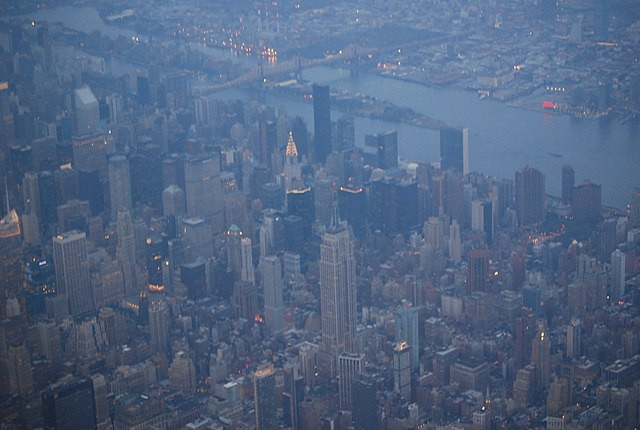The New York State Department of Environmental Conservation has issued an air quality health advisory for New York City, the lower Hudson Valley, and parts of New Jersey. The advisory, effective until 11 p.m., warns that air quality in the region may reach or exceed unhealthy standards due to elevated levels of ground-level ozone.
Sensitive groups, including children, older adults, and individuals with lung diseases such as asthma and chronic obstructive pulmonary disease, are particularly advised to limit strenuous outdoor physical activity. The New York State Department of Health recommends that these individuals take precautions to protect their health.
Areas Affected by the Air Quality Advisory
The following counties in New York are under the advisory:
- New York
- Bronx
- Kings
- Queens
- Richmond
- Westchester
- Rockland
- Orange
- Putnam
In New Jersey, the advisory affects:
- Bergen
- Essex
- Hudson
- Hunterdon
- Mercer
- Middlesex
- Morris
- Passaic
- Somerset
- Sussex
- Union
- Warren
DEC and @HealthNYGov have issued an #AirQuality Health Advisory for Ozone today, June 4th, for New York City and the lower Hudson Valley.
Air quality forecast: https://t.co/RXjWGiajgk
Air Quality Hotline: 1-800-535-1345 pic.twitter.com/BPtfrb50Og — New York State Dept. of Environmental Conservation (@NYSDEC) June 4, 2024
Understanding the Cause
The National Weather Service has indicated that the primary pollutant of concern is ground-level ozone. High-pressure systems trapping pollutants from industry and vehicle exhaust near the ground, combined with sunlight, contribute to the formation of ozone, an irritant for individuals with respiratory issues. The air quality index (AQI) levels are expected to peak just over 100, which is deemed unhealthy for sensitive groups.
"Ozone is invisible," New York City Mayor Eric Adams said at a recent press conference. "We want people with health issues to take necessary measures like face masks."
Health Recommendations
Active children and adults, as well as people with respiratory problems, should minimize prolonged or heavy exertion outdoors. Experts advise taking frequent breaks and watching for symptoms like coughing and shortness of breath. Those with pre-determined action plans for respiratory conditions should follow them closely.
Officials suggest staying indoors in air-conditioned spaces with good air filtration to avoid exposure to poor air quality. As the sun sets, ozone levels are expected to decrease, leading to improved air quality.
Impact of Wildfire Smoke
In addition to ground-level ozone, low concentrations of wildfire smoke from fires burning in regions from Florida through the Caribbean and into Central America are present. While these smoke concentrations are highest in South Texas, small amounts are drifting northward, reaching the tri-state area. However, these concentrations are not expected to cause significant health concerns in and around New York City.
Historical Context
The current advisory brings back memories of last June when winds carried smoke from Canadian wildfires into the region. During that time, New York City experienced some of the worst air quality globally, with an AQI rating over 350. This year's advisory, however, is primarily driven by local ozone levels and not by such external wildfire events.
What to Expect
Tuesday's weather is expected to remain warm, with temperatures in the 80s. The air quality is anticipated to improve on Wednesday as cloud cover increases and rain approaches the region by the evening, which will help to dissipate the pollutants.
Moving Forward
Air quality advisories like the current one are crucial for protecting public health, especially among vulnerable populations. The proactive steps recommended by health and environmental authorities help mitigate the adverse effects of poor air quality.
Residents are encouraged to stay informed about air quality levels in their area through reliable sources such as AirNow.gov and to adhere to health advisories issued by local authorities. By taking necessary precautions, the community can better navigate periods of compromised air quality and safeguard their health.






